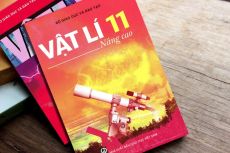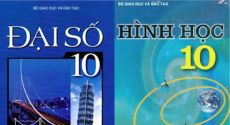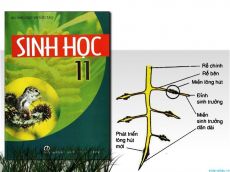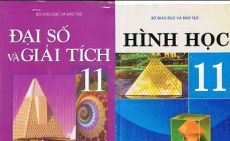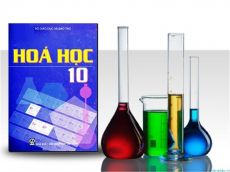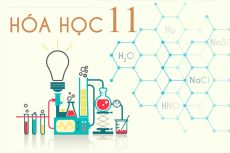Read the text below and decide which answer (A,B,C, or D) best fits each space.
BICYCLES
Why don’t the British cycles? Only a quarter of the estimated twenty million bicycles in the country are thought to be in (58) …….. use. In Denmark, which is flatter but no darker or rainier than Britain, twenty percent of all journeys are made by bicycles, while in Britain the (59) …….. is only 5%. The government are trying to (60) …….. this. It is hoped that a grant of millions of pounds from the National Lottery will (61)…….. more people to use their bikes. The money will be used to (62) …….. for a 6,500 mile national network of cycle tracks. Britain needs to (63) …….. environmentally friendly scheme such as this. The southern third of the country is one of the most (64)…….. areas of the world. Environmentalists make it (65) …….. to build new roads, and (66) …….. roads are overcrowded. One official committee described the growth of motor transport as “possibly the (67) ……. environmental threat to the UK”. The (68)…….. of building the cycles tracks is to motivate people to use their bicycles instead of their cars. However, the new tracks are being built (69) …….. cities and not through them. This (70) …….. that only long distance journeys may be easier and safer. Those cyclists who want to (71) …….. inside cities will still be in danger of (72) …….. their lives on busy roads every time they use their bicycles.
64................
Suy nghĩ và trả lời câu hỏi trước khi xem đáp án
Lời giải:
Báo saiGiải thích: crowded (adj): đông đúc
Những đáp án còn lại:
A. Full (adj): đầy đủ
C. Occupied (adj): bận rộn
D. Loaded (adj): nặng nề, gay go
Câu hỏi liên quan
-
Read the following passage and mark the letter A, B, C, or D on your answer sheet to indicate the correct answer to each of the questions.
A rather surprising geographical feature of Antarctica is that a huge freshwater lake, one of the world’s largest and deepest, lies hidden there under four kilometers of ice. Now known as Lake Vostok, this huge body of water is located under the ice block that comprises Antarctica. The lake is able to exist in its unfrozen state beneath this block of ice because its waters are warmed by geothermal heat from the earth’s core. The thick glacier above Lake Vostok actually insulates it from the frigid temperatures on the surface.
The lake was first discovered in the 1970s while a research team was conducting an aerial survey of the area. Radio waves from the survey equipment penetrated the ice and revealed a body of water of indeterminate size. It was not until much more recently that data collected by satellite made scientists aware of the tremendous size of the lake; the satellite-borne radar detected an extremely flat region where the ice remains level because it is floating on the water of the lake.
The discovery of such a huge freshwater lake trapped under Antarctica is of interest to the scientific community because of the potential that the lake contains ancient microbes that have survived for thousands of years, unaffected by factors such as nuclear fallout and elevated ultraviolet light that have affected organisms in more exposed areas. The downside of the discovery, however, lies in the difficulty of conducting research on the lake in such a harsh climate and in the problems associated with obtaining uncontaminated samples from the lake without actually exposing the lake to contamination. Scientists are looking for possible ways to accomplish this.
All of the following are true about the 1970 survey of Antarctica EXCEPT that it______.
-
Read the following passage and mark the letter A, B, C, or D on your answer sheet to indicate the correct answer to each of the questions.
Mandatory volunteering made many members of Maryland's high school class of 97 grumble with indignation. They didn't like a new requirement that made them take part in the school's community service program. Future seniors, however, probably won't be as resistant now that the program has broken in. Some, like John Maloney, already have completed their required hours of approved community service. The Bowie High School sophomore earned his hours in eighth grade by volunteering two nights a week at the Larkin-Chase Nursing and Restorative Center in Bowie.He played shuffle board, cards, and other games with the senior citizens. He also helped plan parties for them and visited their rooms to keep them company.
John, fifteen, is not finished volunteering. Once a week he videotapes animals at the Prince George's County animal shelter in Forestville. His footage is shown on the Bowie public access television channel in hopes of finding homes for the animals. "Volunteering is better than just sitting around," says John, "and I like animals; I don't want to see them put to sleep." He's not the only volunteer in his family. His sister, Melissa, an eighth grader, has completed her hours also volunteering at Larkin-Chase.
"It is a good idea to have kids go out into the community, but it's frustrating to have to write essays about the works," she said. It makes you feel like you're doing it for the requirement and not for yourself." The high school's service learning office, run by Beth Ansley, provides information on organizations seeking volunteers so that students will have an easier time fulfilling their hours.
"It's ridiculous that people are opposing the requirements," said Amy Rouse, who this summer has worked at the Ronald McDonald House and has helped to rebuild a church in Clinton.
"So many people won't do the service unless it's mandatory," Rouse said, "but once they start doing it, they'll really like it and hopefully it will become a part of their lives - like it has become a part of mine."
The best title of the passage could be ______.
-
Choose the word or phrase among A, B, C or D that best fits the blank space in the following passage:
"The 22nd SEA Games were launched by an impressive opening ceremony at Hanoi’s My Dinh National Stadium, in front of over 40,000 awed spectators. Divided into two parts, rites and festivals, the ceremony (1)…. At 19:00 with the song, “Vietnam - Our Fatherland”. The (2)….. appearance of parachutists, carrying the 11 national flags of the competing Southeast Asian countries, was greeted (3) …. thunderous applause from the audience.
All the stadium’s lights suddenly came on, (4)…. the start of the procession of Vietnam’s flag and the 22nd SEA Games' Symbol. The 11 sporting delegations then marched past the reviewing stand to excite applause from officials and spectators.
The sacred torch, which symbolises the (5)….. of the Games and (6)… to compete with burning intensity, was taken from the Ho Chi Minh Museum and passed by Truong Quoc Thang (cyclist), Bui Thi Nhung (runner), Vu Kim Anh (karate artist) and athletes from 10 regional countries to Nguyen Thuy Hien (wushu artist) (7)….. gave it to the Prime Minister, who in tum passed it to an athlete dressed like national hero Giong.
From this athlete’s hand, the official flame was lit at My Dinh National Stadium and will bum (8) …… the course of the Games. (9)…… at the opening ceremony, Minister-Chairman of the Physical Training and Sports Committee Nguyen Danh Thai, who is also the head of the 22nd SEA Games Organising Board, warmly welcomed Party and State leaders, delegates, domestic and international guests, and 11 sports delegations from Southeast Asian countries to the 22nd SEA Games.
(10)……. behalf of the host country, Prime Minister Phan Van Khai declared the 22nd SEA Games open."8. From this athlete’s hand, the official flame was lit at My Dinh National Stadium and will bum (8) …… the course of the Games
-
Almost as soon as World War II ended, the debate began over who had actually done the most on the Allied side to ensure the defeat of the Axis powers. The Russians only needed to point to their twenty million plus war dead to justify their rights in Eastern Europe and their new position as a great power on the world stage. Yet, Americans could also claim that they had done as much, if not more, as the Russians to defeat the Axis enemy. In hindsight, it is obvious that despite its greater number of dead, the Russian effort ranks second place to the American. In particular, the American effort seems greater in light of three crucial points: it was fighting at extreme distances from its home territory; it simultaneously fought three different enemies on a multitude of complex fronts with air, naval, land forces; and finally, it supplied many other fighting forces, including the Russians, with massive amounts ofmaterial.
The main fronts of World War II were in North Africa, Italy, Western and Eastern Europe, the Pacific Ocean, China, and India. The United States military forces fought on or supported every front, all of which were at extreme distances from the continental United States. A great logistical effort required to support both its own forces and those of many other nations. Above all, supply ships were essential because without the supply ships, all would have been in vain. Keeping the world's sea lanes free was one of the great accomplishments of the United States Navy and her allies, especially the British and Canadians. This allowed ships to traverse great distances and bring American and other Allied fighting forces to face the Axis powers. The Russians, on the other hand, were fighting in their own country for much of the war and were close to their supply lines. They fought on one continuous font and did not have to travel far to meet the enemy.
The United States fought all three great Axis powers during the war: Germany, Japan, and Italy. While it cannot be denied that the Russian did the lion's share of the fighting against Germany and the lesser Axis powers of Finland, Hungary, Romania, and Bulgaria for a longer time, it was not until the last days of the war that Russia attacked Japan. As for the Italians, the Russians only met the reluctant few whom Hitler managed to coerce for his Russian campaign. Another area to take into consideration is the strategic bombing campaign that the Americans and British waged against German industry, something that the Russians did not take part in at all. Finally, with the exception of the Baltic Sea, the Russian navy played a very minor role in the war compared to American's navy. Despite significant aid from the British, Australians, and New Zealanders, the Americans bore the brute of the Pacific fighting.
The Chinese tied down a massive number of Japanese troops on the Asian mainland, but they were supplied almost exclusively by the United States. American arms, support equipment, food, and clothing went to the four corners of the world during the war even before American officially entered it in 1941. Indeed, the Russian Red Army rode into Eastern Europe on the wheels of over 300,000 American trucks, fed itself on a diet of American canned ham, and wore
American boots. Coupled with all this were billion-dollar loans with generous terms of interest, which America gave to its allies. American was the only Allied nation that did not need to borrow any money during the war.
Russia's combat dead were approximately eight million. American's number of combat deal was nowhere near the equal of the Russia's comprising less than five percent of the number of Russian combat deaths. This is not only a reflection of the intensity of the fighting in Eastern Euro
-
Read the following passage and choose the best answer for each blank.
Yesterday, Eleanor Preston won an international swimming competition for girls (26) _________ under sixteen. She swam faster (27) _________ girls from ten other countries. This (28) ______even better when you learn that Elenor is only thirteen. She had to have special (29) _________to enter, because normally competitors are fourteen or older. Eleanor has been (30) ______on swimming for a long time – (31) ______she was three in fact. I wonder whether she found it hard to (32) _______several hours a day training. She (33) _________. me that sometimes she has problems finding time for homework, but that’s all. “My parents have given up so (34) _______time driving me to local competitions, I think it’s been harder for them, actually.” Her aim is to swim at the Olympic Games. After yesterday’s performance, I think she may (35)_________. there.
(33) _________
-
The Japan of the mid-nineteenth century was a shadow of the modern economic juggernaut that is now one of the world's leading traders. For hundreds of years, Japan had been secluded from the outside world by the strict policies of the rulers of Japan, the Tokugawa shoguns. With the exception of one Dutch ship per year at the port of the Nagasaki, the Japanese refused to deal with foreign ships or nations. Sailors shipwrecked on the Japanese islands were treated harshly and often imprisoned. Passing vessels were refused food, water, and other provisions. With a goal to right these wrongs and to open Japan to trade, in 1853, the United States sent its most capable man, Admiral Matthew Perry, and four warships to open Japan to the rest of the world. The consequences of those actions are still being felt today.
In the seventeenth century, the Japanese had opened their doors briefly to the Dutch and allowed a trading station and Christian enclave in Nagasaki. Guns were imported as part of this trade, and they were one of the reasons for a great upheaval that engulfed Japan for many decades, as a civil war raged between powerful shoguns, or warlords. Finally, Tokugawa emerged as the victor and claimed the lordship of Japan. During these upheavals, the emperor and his family had stood by wielding no power and existed merely as a figurehead. Soon after the civil war, the abandoned the use of guns and the art of the gun making. When Admiral Perry and his fleet arrived in 1853, they were defenseless against his awesome firepower.
Perry had three main purposes when he arrived in Japan: open the country to American trade, get an agreement to use Japan as a coaling and provisioning station for American vessels, and provide guarantees that Japan would aid shipwrecked American sailors. He wished to deal only with the highest officials and rebuffed Japanese attempts to foster lower-level emissaries on him. He sailed away to examine further the coast of Taiwan as a possible coaling station but returned to Japan the following spring in March 1854. This time, under threat of naval bombardment, the Japanese relented and finally signed the Treaty of Kanagawa on March 31, 1854. In addition to the three main items, the Japanese agreed to allow an American consulate to be established. At first, only Nagasaki was open to American trade, but the treaty stipulated that, after five years, other ports would be opened.
The consequences of these events were far reaching for Japan and the world. Within a few years, foreign currency began to flow to Japan, which upset its economy and caused rising inflation. This was a precursor to the fall of the Tokugawa shoguns and the return of the emperor as the leader of Japanese affairs in 1868. The Emperor Meiji then set a clear path for his nation, not wanting Japan to be under the heel of the foreigners who now clamored at the heel of the foreigners of his land. Meiji sent sailors to England to learn how to build ships and fight a modern naval war, invited German army officers to train his soldiers, and made deals with many companies to modernize Japan's industry, transportation, and communications. In fact, the efforts were so successful that, by the 1980s, the world began to view Japan as one of the great powers, more so after it defeated both China and Russia on land and at sea in two local wars. The Russian defeat was even more astonishing since the Europeans were unused to losing to those they considered their inferiors.
Japan's rapid industrialized and militarization had dreadful consequences for Asia, as Meiji's grandson Hirohito led the nation down the path to world war, which ultimately saw the destruction of much of Japan. The shock of this defeat still echoes through Japanese history, as does the arriv -
Read the following passage and mark the letter A, B, C, or D on your answer sheet to indicate the correct answer to each of the questions.
The mineral particles found in soil range in size from microscopic clay particles to large boulders. The most abundant particles - sand, silt, and clay - are the focus of examination in studies of soil texture. Texture is the term used to describe the line composite sizes of particles in a soil sample, typically several representative handfuls . To measure soil texture, the sand, silt, and clay particles are sorted out by size and weight. The weights of each size are then expressed as a percentage of the sample weight.
In the field, soil texture can be estimated by extracting a handful of sod and squeezing the damp soil into three basic shapes; (1) cast, a lump formed by squeezing a sample in a clenched fist; (2) thread, a pencil shape formed by rolling soil between the palms; and (3) ribbon, a flatfish shape formed by squeezing a small sample between the thumb and index finger. The behavioral characteristics of the soil when molded into each of these shapes, if they can be formed at all, provides the basis for a general textural classification. The behavior of the soil in the hand test is determined by the amount of clay in the sample. Clay particles are highly cohesive, and when dampened , behave as a plastic. Therefore the higher the clay content in a sample, the more refined and durable the shapes into which it can be molded.
Another method of determining soil texture involves the use of devices called sediment sieves, screens built with a specified mesh size. When the soil is filtered through a group of sieves, each with a different mesh size, the particles become grouped in corresponding size categories. Each category can be weighed to make a textural determination. Although sieves work well for silt, sand, and larger particles, they are not appropriate for clay particles. Clay is far too small to sieve accurately; therefore, in soils with a high proportion of clay, the fine particles are measured on the basis of their settling velocity when suspended in water. Since clays settle so slowly, they are easily segregated from sand and silt. The water can be drawn off and evaporated, leaving a residue of clay, which can be weighed.
It can be inferred from the passage that a soil sample with little or no clay in it ______.
-
Today we take electricity for granted and perhaps we do not realize just how useful this discovery has been. Steam was the first invention that replaced wind power. It was used to drive engines and was passed through pipes and radiators to warm rooms. Petrol mixed with air was the next invention that provided power. Exploded in a cylinder, it drove a motor engine, Beyond these simple and direct uses, those forms have not much adaptability.
On the other hand, we make use of electricity in thousands of ways. From the powerful voltages that drive our electric trains to the tiny current needed to work a simple calculator, and from the huge electric magnet in steel works that can lift 10 tons to the tiny electric magnet in a doorbell, all are powered by electricity. An electric current can be made with equal ease to heat a huge mass of molten metal in a furnace, or to boil a jug for a cup of coffee. Other than atomic energy, which has not as yet been harnessed to the full, electricity is the greatest power in the world. It is flexible, and so adaptable for any task for which it is wanted. It travels so easily and with incredible speed along wires or conductors that it can be supplied instantly over vast distances.
To generate electricity, huge turbines or generators must be turned. In Australia they use coal or water to drive this machinery. When dams are built, falling water is used to drive the turbines without polluting the atmosphere with smoke from coal. Atomic power is used in several countries but there is always the fear of an accident. A tragedy once occurred at Chernobyl, in Ukraine, at an atomic power plant used to make electricity. The reactor leaked, which caused many deaths through radiation.
Now scientists are examining new ways of creating electricity without harmful effects to the environment. They may harness the tides as they flow in and out of bays. Most importantly, they hope to trap sunlight more efficiently. We do use solar heaters for swimming pools but as yet improvement in the capacity of the solar cells to create more current is necessary. When this happens, electric cars will be viable and the world will rid itself of the toxic gases given off by trucks and cars that burn fossil fuels.Which of the following power sources causes pollution by emitting harmful gases?
-
Large animals that inhabit the desert have evolved a number of adaptations for reducing the effects of extreme heat. One adaptation is to be light in color, and to reflect rather than absorb the Sun's rays. Desert mammals also depart from the normal mammalian practice of maintaining a constant body temperature. Instead of trying to keep down the body temperature deep inside the body, which would involve the expenditure of water and energy, desert mammals allow their temperatures to rise to what would normally be fever height, and temperatures as high as 46 degrees Celsius have been measured in Grant's gazelles. The overheated body then cools down during the cold desert night, and indeed the temperature may fall unusually low by dawn, as low as 34 degrees Celsius in the camel. This is an advantage since the heat of the first few hours of daylight is absorbed in warming up the body, and an excessive buildup of heat does not begin until well into the day.
Another strategy of large desert animals is to tolerate the loss of body water to a point that would be fatal for non-adapted animals. The camel can lose up to 30 percent of its body weight as water without harm to itself, whereas human beings die after losing only 12 to 13 percent of their body weight. An equally important adaptation is the ability to replenish this water loss at one drink. Desert animals can drink prodigious volumes in a short time, and camels have been known to imbibe over 100 liters in a few minutes. A very dehydrated person, on the other hand, cannot drink enough water to rehydrate at one session, because the human stomach is not sufficiently big and because a too rapid dilution of the body fluids causes death from water intoxication. The tolerance of water loss is of obvious advantage in the desert, as animals do not have to remain near a water hole but can obtain food from grazing sparse and far-flung pastures. Desert-adapted mammals have the further ability to feed normally when extremely dehydrated, it is a common experience in people that appetite is lost even under conditions of moderate thirst.
What is the main topic of the passage?
-
Choose the word or phrase among A, B, C or D that best fits the blank space in the following passage:
"The 22nd SEA Games were launched by an impressive opening ceremony at Hanoi’s My Dinh National Stadium, in front of over 40,000 awed spectators. Divided into two parts, rites and festivals, the ceremony (1)…. At 19:00 with the song, “Vietnam - Our Fatherland”. The (2)….. appearance of parachutists, carrying the 11 national flags of the competing Southeast Asian countries, was greeted (3) …. thunderous applause from the audience.
All the stadium’s lights suddenly came on, (4)…. the start of the procession of Vietnam’s flag and the 22nd SEA Games' Symbol. The 11 sporting delegations then marched past the reviewing stand to excite applause from officials and spectators.
The sacred torch, which symbolises the (5)….. of the Games and (6)… to compete with burning intensity, was taken from the Ho Chi Minh Museum and passed by Truong Quoc Thang (cyclist), Bui Thi Nhung (runner), Vu Kim Anh (karate artist) and athletes from 10 regional countries to Nguyên Thuy Hien (wushu artist) (7)….. gave it to the Prime Minister, who in tum passed it to an athlete dressed like national hero Giong.
From this athlete’s hand, the official flame was lit at My Dinh National Stadium and will bum (8) …… the course of the Games. (9)…… at the opening ceremony, Minister-Chairman of the Physical Training and Sports Committee Nguyen Danh Thai, who is also the head of the 22nd SEA Games Organising Board, warmly welcomed Party and State leaders, delegates, domestic and international guests, and 11 sports delegations from Southeast Asian countries to the 22nd SEA Games.
(10)……. behalf of the host country, Prime Minister Phan Van Khai declared the 22nd SEA Games open."3. was greeted (3) …. thunderous applause from the audience.
-
Read the following passage and mark the letter A, B, C, or D on your answer sheet to indicate the correct answer to each of the questions.
No matter how much you’ve trained, performance anxiety before or during a competition may occur, hindering the results of your match.
While you can tell yourself to stay calm prior to a competition, managing performance anxiety may not be as simple as. Research has shown that strategies such as meditation and guided imagery are great places to start; both require your brain to rehearse what you will do during your competition. Your imagination holds much more power than you may expect, helping you focus on how to beat your opponent, instead of other factors that contribute to your anxiety. Adequate preparation also plays a large role.
To master the mental game, it takes time. Starting one month before your competition, consider sitting in solitude in a comfortable position for 15 minutes each day. Focus first on breathing in and out deeply. Then, begin to imagine competition situations and visualize yourself in a fight with your competitor. Be mindful of your anxiety and return your focus to breathing if you feel yourself tense up. Sometimes, you may find yourself thinking self-deprecating or negative thoughts, at which point you should consciously replace any negative self-talk with positive self-talk. During these visualizations, also be sure to think about your posture and form and create cues — mental and verbal — that will help you review and correct your technique.
Pre-competition jitters are completely normal and it’s important to acknowledge that. Accepting that this excitement and/or nervousness is normal will help your body also understand that what you are experiencing is not fear, but perhaps part of your adrenaline response to competition. With more experience, mindful visualization and mental/physical preparation can help you manage and overcome performance anxiety.The word “hindering” in paragraph 1 is closest in meaning to ______.
-
Read the following passage and mark the letter A, B, C, or D on your answer sheet to indicate the correct answer to each of the questions.
New research shows that long-term changes in diseases in ocean species coincides with decades of widespread environmental change. The paper, "Increases and decreases in marine disease reports in an era of global change," was published Oct. 9 in Proceedings of the Royal Society B.
Understanding oceanic trends is important for evaluating today's threats to marine systems, and disease is an important sentinel of change, according to senior author Drew Harvell, professor of marine biology at Cornell University. "Disease increases and decreases can both be bad news," said lead author Allison Tracy, who studied with Harvell. "The long-term changes in disease that we see here may result from anthropogenic pressure on plants and animals in the ocean." The researchers examined marine infectious disease reports from 1970 to 2013, which transcend short-term fluctuations and regional variation. They examined records of corals, urchins, mammals, decapods, fish, mollusks, sharks, rays, seagrass and turtles.
For corals and urchins, reports of infectious disease increased over the 44-year period. In the Caribbean, increasing coral disease reports correlated with warming events. It is widely known that coral bleaching increases with warming, but Harvell said they have established a long-term connection between warming and coral disease. "We've finally linked a coral killer like infectious disease to repeated warming bouts over four decades of change," she said. "Our study shows that infectious disease reports are associated with warm temperature anomalies in corals on a multi-decadal scale." These results improve understanding of how changing environments alter species interactions, and they provide a solid baseline for health of marine life in the period studied.
Which best serves as the title for the passage?
-
Read the following passage and mark the letter A, B, C, or D on your answer sheet to indicate the correct answer to each of the questions.
To quote CREST founder Dr. Martha Honey, we earnestly believe that ecotourism is “simply a better way to travel.” Here’s a look at how this transformational approach to travel benefits conservation, increases cross-cultural understanding, and ultimately turns travelers into environmental advocates:
To see how ecotourism benefits nature and wildlife, let’s look at endangered species such as African Elephants. Ivory from Elephant tusks is worth $1500 a pound on the black market, which has led to a dramatic increase in poaching. But Elephants are worth 76 times more alive than dead. When you consider the revenue from wildlife photography tours, luxury safari camps, and other ecotourism offerings, a single Elephant is worth $1.3 million over the course of its lifetime! Ecotourism offers a long-term alternative to exploitation, generating sustainable revenue and ensuring better overall health of the ecosystem.
Nature reserves and national parks help prevent deforestation and pollution, while also protecting the habitat of endemic species. The revenue that ecotourism provides can help replace profits from exploitative practices such as mining or slash ‘n’ burn agriculture. It can also help ensure the long-term financial viability of the area. Naturalist guides also help travelers understand the value of a pristine ecosystem, and teach them about the importance of conservation. This ultimately help to create a more mindful and conscious legion of travelers.
When managed properly, ecotourism can offer locals alternative revenue streams. In wildlife-rich countries such as Rwanda, former poachers are often employed as guides or trackers, capitalizing on their knowledge of the animals and their habitat. In Costa Rica, unemployment has fallen to less than 10% since the country started building its ecotourism infrastructure in the 1970s. Involving local communities in tourism management empowers them by ensuring that more revenue is reinvested locally. Ecotourism also offers indigenous peoples an opportunity to remain on ancestral land, conserve it, and preserve traditional culture.
Sure, being a responsible traveler takes a greater level of commitment to being conscious and mindful of the impact we have on the destinations we visit. But ecotourism also offers us incredible, transformative experiences, allowing us to develop closer personal relationships to the nature, wildlife, and local people we encounter during our adventures. Learning about ecotourism can permanently change your understanding of mankind’s role in our planetary ecosystem. And once you’ve had that sort of travel experience, you’ll never want to travel the traditional way again.According to paragraph 5, why did the author claim that people will prefer ecotourism over normal one?
-
Read the following passage and mark the letter A, B, C, or D on your answer sheet to indicate the correct answer to each of the questions.
In our connected globalized world, the languages which dominate communications and business, Mandarin, Hindi, English, Spanish and Russian amongst others, are placing small languages spoken in remote places under increasing pressure. Fewer and fewer people speak languages such as Liki, Taushiro and Dumi as their children shift away from the language of their ancestors towards languages which promise education, success and the chance of a better life. While to many parents, this may appear a reasonable choice, giving their offspring the opportunity to achieve the sort of prosperity they see on television, the children themselves often lose touch with their roots. However, in many places the more reasonable option of bilingualism, where children learn to speak both a local and a national language, is being promoted. This gives hope that many endangered languages will survive, allowing people to combine their links to local tradition with access to wider world culture.
While individuals are free to choose if they wish to speak a minority language, national governments should be under no obligation to provide education in an economically unproductive language, especially in times of budget constraints. It is generally accepted that national languages unite and help to create wealth while minority regional languages divide. Furthermore, governments have a duty to ensure that young people can fulfil their full potential, meaning that state education must provide them with the ability to speak and work in their national language and so equip them to participate responsibly in national affairs. People whose language competence does not extend beyond the use of a regional tongue have limited prospects. This means that while many people may feel a sentimental attachment to their local language, their government’s position should be one of benign neglect, allowing people to speak the language, but not acting to prevent its eventual disappearance.
Many PhD students studying minority languages lack the resources to develop their language skills, with the result that they have to rely on interpreters and translators to communicate with speakers of the language they are studying. This has a detrimental effect on the quality of their research. At the same time, they have to struggle against the frequently expressed opinion that minority languages serve no useful purpose and should be allowed to die a natural death. Such a view fails to take into account the fact that a unique body of knowledge and culture, built up over thousands of years, is contained in a language and that language extinction and species extinction are different facets of the same process. They are part of an impending global catastrophe which is beginning to look unavoidable.What does the word “this” in the first paragraph refer to?
-
Read the following passage and choose the best answer for each blank.
Yesterday, Eleanor Preston won an international swimming competition for girls (26) _________ under sixteen. She swam faster (27) _________ girls from ten other countries. This (28) ______even better when you learn that Elenor is only thirteen. She had to have special (29) _________to enter, because normally competitors are fourteen or older. Eleanor has been (30) ______on swimming for a long time – (31) ______she was three in fact. I wonder whether she found it hard to (32) _______several hours a day training. She (33) _________. me that sometimes she has problems finding time for homework, but that’s all. “My parents have given up so (34) _______time driving me to local competitions, I think it’s been harder for them, actually.” Her aim is to swim at the Olympic Games. After yesterday’s performance, I think she may (35)_________. there.
(30) _________
-
Today we take electricity for granted and perhaps we do not realize just how useful this discovery has been. Steam was the first invention that replaced wind power. It was used to drive engines and was passed through pipes and radiators to warm rooms. Petrol mixed with air was the next invention that provided power. Exploded in a cylinder, it drove a motor engine, Beyond these simple and direct uses, those forms have not much adaptability.
On the other hand, we make use of electricity in thousands of ways. From the powerful voltages that drive our electric trains to the tiny current needed to work a simple calculator, and from the huge electric magnet in steel works that can lift 10 tons to the tiny electric magnet in a doorbell, all are powered by electricity. An electric current can be made with equal ease to heat a huge mass of molten metal in a furnace, or to boil a jug for a cup of coffee. Other than atomic energy, which has not as yet been harnessed to the full, electricity is the greatest power in the world. It is flexible, and so adaptable for any task for which it is wanted. It travels so easily and with incredible speed along wires or conductors that it can be supplied instantly over vast distances.
To generate electricity, huge turbines or generators must be turned. In Australia they use coal or water to drive this machinery. When dams are built, falling water is used to drive the turbines without polluting the atmosphere with smoke from coal. Atomic power is used in several countries but there is always the fear of an accident. A tragedy once occurred at Chernobyl, in Ukraine, at an atomic power plant used to make electricity. The reactor leaked, which caused many deaths through radiation.
Now scientists are examining new ways of creating electricity without harmful effects to the environment. They may harness the tides as they flow in and out of bays. Most importantly, they hope to trap sunlight more efficiently. We do use solar heaters for swimming pools but as yet improvement in the capacity of the solar cells to create more current is necessary. When this happens, electric cars will be viable and the world will rid itself of the toxic gases given off by trucks and cars that burn fossil fuels.The advantage of harnessing the power of the tides and of sunlight to generate electricity is that they ,................
-
Read the following passage and mark the letter A, B, C, or D on your answer sheet to indicate the correct word or phrase that best fits each of the numbered blanks.
Amparo Lasén, the Spanish sociologist who conducted the study found that Londoners use their cell phones the least in public. If they are with others, they prefer to let calls be answered by voice mail (a recorded message) and then they check for messages later. If the English do answer a call on the street, they seem to dislike talking with others around. They tend to move away from a crowded sidewalk and seek out a place (23) ________ they cannot be heard, such as the far side of a subway entrance or even the edge of a street. They seem to feel that the danger of the traffic is (24) ___________ to the risk of having their conversation be overheard. This has led to a behavior that Laser has called "clustering." At a busy time of day on the streets of London, you may find small crowds of cell phone users grouped together, each one talking into a cell phone. Even when it is raining—as it is often in London—people still prefer not to hold their conversations where others could hear. They talk (25) _____________ their umbrellas or in a doorway.
In Paris, however, there are stricter rules about how and when to use cell phones. It is not considered polite to use a phone in a restaurant, (26) ______________, though it might be acceptable in the more informal setting of a café. One special custom that has developed in cafés seems unique to Paris. Young women often place their cell phones on the table beside them to signal that they are expecting someone. When the friend arrives, the phone is (27) _____________. In fact, the French are generally very disapproving of phone use in public and are quick to express that disapproval, even to strangers.They talk (25) _____________ their umbrellas or in a doorway.
-
Read the following passage and mark the letter A, B, C, or D on your answer sheet to indicate the correct answer to each of the questions.
The mineral particles found in soil range in size from microscopic clay particles to large boulders. The most abundant particles - sand, silt, and clay - are the focus of examination in studies of soil texture. Texture is the term used to describe the line composite sizes of particles in a soil sample, typically several representative handfuls . To measure soil texture, the sand, silt, and clay particles are sorted out by size and weight. The weights of each size are then expressed as a percentage of the sample weight.
In the field, soil texture can be estimated by extracting a handful of sod and squeezing the damp soil into three basic shapes; (1) cast, a lump formed by squeezing a sample in a clenched fist; (2) thread, a pencil shape formed by rolling soil between the palms; and (3) ribbon, a flatfish shape formed by squeezing a small sample between the thumb and index finger. The behavioral characteristics of the soil when molded into each of these shapes, if they can be formed at all, provides the basis for a general textural classification. The behavior of the soil in the hand test is determined by the amount of clay in the sample. Clay particles are highly cohesive, and when dampened , behave as a plastic. Therefore the higher the clay content in a sample, the more refined and durable the shapes into which it can be molded.
Another method of determining soil texture involves the use of devices called sediment sieves, screens built with a specified mesh size. When the soil is filtered through a group of sieves, each with a different mesh size, the particles become grouped in corresponding size categories. Each category can be weighed to make a textural determination. Although sieves work well for silt, sand, and larger particles, they are not appropriate for clay particles. Clay is far too small to sieve accurately; therefore, in soils with a high proportion of clay, the fine particles are measured on the basis of their settling velocity when suspended in water. Since clays settle so slowly, they are easily segregated from sand and silt. The water can be drawn off and evaporated, leaving a residue of clay, which can be weighed.
It can be inferred that the names of the three basic shapes mentioned in paragraph 2 reflect ______
-
Read the following passage and mark the letter A, B, C, or D on your answer sheet to indicate the correct answer to each of the questions.
The mineral particles found in soil range in size from microscopic clay particles to large boulders. The most abundant particles - sand, silt, and clay - are the focus of examination in studies of soil texture. Texture is the term used to describe the line composite sizes of particles in a soil sample, typically several representative handfuls . To measure soil texture, the sand, silt, and clay particles are sorted out by size and weight. The weights of each size are then expressed as a percentage of the sample weight.
In the field, soil texture can be estimated by extracting a handful of sod and squeezing the damp soil into three basic shapes; (1) cast, a lump formed by squeezing a sample in a clenched fist; (2) thread, a pencil shape formed by rolling soil between the palms; and (3) ribbon, a flatfish shape formed by squeezing a small sample between the thumb and index finger. The behavioral characteristics of the soil when molded into each of these shapes, if they can be formed at all, provides the basis for a general textural classification. The behavior of the soil in the hand test is determined by the amount of clay in the sample. Clay particles are highly cohesive, and when dampened , behave as a plastic. Therefore the higher the clay content in a sample, the more refined and durable the shapes into which it can be molded.
Another method of determining soil texture involves the use of devices called sediment sieves, screens built with a specified mesh size. When the soil is filtered through a group of sieves, each with a different mesh size, the particles become grouped in corresponding size categories. Each category can be weighed to make a textural determination. Although sieves work well for silt, sand, and larger particles, they are not appropriate for clay particles. Clay is far too small to sieve accurately; therefore, in soils with a high proportion of clay, the fine particles are measured on the basis of their settling velocity when suspended in water. Since clays settle so slowly, they are easily segregated from sand and silt. The water can be drawn off and evaporated, leaving a residue of clay, which can be weighed.
The word "dampened" in the passage is closest in meaning to _____.
-
Read the passage carefully and choose the correct answer.
The 22nd SEA Games, hosted this year by Vietnam, has joined the international movement to rid sports of tobacco. For the first time, the regional sporting event will be tobacco-free under a landmark cooperative agreement signed in April 2003 between the World Health Organization (WHO), the 22nd SEA Games Organizing Committee and the Vietnamese Ministry of Health. Hanoi Health Department has organized a press seminar to celebrate and raise awareness about the tobacco-free SEA Games.
The 22nd SEA Games is the first games hosted by Vietnam and 10 countries from the Southeast Asian region with nearly 8,000 athletes and coaches will participate. It will be the first tobacco-free international sporting event in Vietnam, joining other international tobacco-free sporting events such as the FIFA World Cup 2002, and the Winter Olympic Games 2002.
The 22nd SEA Games will ban all sales, advertising and other promotion of tobacco products, and restricts smoking in all Games venues. The aim is to protect spectators, athletes, event staff, media and other visitors from the serious health hazards of second-hand tobacco smoke, as well as to change public attitudes about the social acceptability of smoking. Madame Pascale Brudon, WHO Representative in Vietnam, stated, "Vietnam has established 3 years ago a comprehensive, ambitious national tobacco control policy and a national tobacco control program. The tobacco-free 22nd SEA Games will be yet another area where Vietnam is leading the way for other countries in the region and the world in protecting its citizens from the debilitating and disastrous consequences of tobacco use."
WHO has provided funding and technical assistance to the SEA Games Organizing Committee and Vietnamese Ministry of Health to train of over 4,000 SEA Games organizers and volunteers on the implementation of the tobacco-free policy. An international team of trainers from the Ministry of Health, International Organization for Good Temper (lOGT), WHO and International Development Enterprises (IDE) began a series of national training workshops for volunteers in April, 2003. The tobacco-free SEA Games are an inspiration and a model for other sport events, big and small, not only in Vietnam but also in the Southeast Asian and Western Pacific Region.
According to the third paragraph, SEA Games _______.
